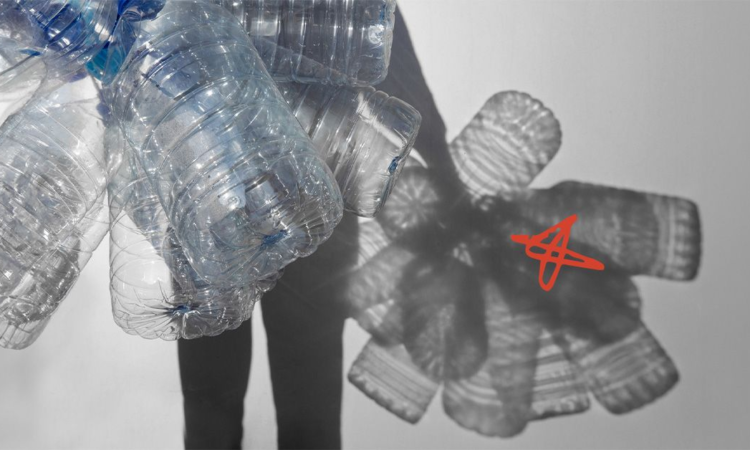
Male infertility remains a global issue, with its causes often not well understood.
Given the growing evidence of microplastics infiltrating various biological systems, such as blood and lungs, researchers are now exploring their potential effects on reproductive systems.
Previous research has investigated the presence of microplastics in male reproductive organs.
For example, in one study, researchers discovered 12 different types of microplastics in the testicles of dogs and humans. In dogs, they found that higher levels of certain microplastics correlated with lower sperm counts and reduced testis weight.
Now, new research published in
These polymer fragments can vary in size from less than 0.2 inches (5 millimeters) to as small as 1 micrometer (1/25,000th of an inch).
Smaller fragments, known as nanoplastics, are measured in billionths of a meter.
Microplastics form when larger plastic materials degrade chemically or wear down physically into tinier pieces.
Experts suggest that some tiny particles can penetrate individual cells and tissues within major organs, and there is growing evidence that these particles are becoming more prevalent in our bodies.
The samples were collected from participants diagnosed with erectile dysfunction (ED) who were undergoing penile implant surgery at the University of Miami between August and September 2023.
Chemical imaging analysis of the samples revealed that 4 out of 5 men had microplastics in their penile tissue.
The study identified seven different types of microplastics, with polyethylene terephthalate (PET) and polypropylene (PP) being the most common.
Ranjith Ramasamy, MD, the lead author of the study and a reproductive urology expert who conducted the research at the University of Miami, explained the key findings to Medical News Today.
“Microplastics can enter the human body through ingestion, inhalation, and skin contact,” Dr. Ramasamy explained. “They are present in the air, water, and food, especially in items like seafood, sea salt, and bottled beverages.”
He noted that these tiny particles can travel through the bloodstream and accumulate in various tissues, including the penile tissue.
“The study found that microplastics, tiny plastic particles less than 5mm in size, were present in the penile tissue of men who underwent surgery for erectile dysfunction. These microplastics were detected in 80% of the samples, with the most common types being polyethylene terephthalate (PET) and polypropylene (PP).”
– Dr. Ranjith Ramasamy
Tracey Woodruff, PhD, professor and director of Environmental Research and Translation for Health (EaRTH) Center at the University of California, San Francisco, not involved in this research, said:
“[T]his certainly was an eye-popping topic, but in the end, I’m not surprised that there were microplastics in penile tissue – because they have been measured in all the body parts that have been investigated to date, including blood, placenta, stool, and recently, testicles.”
“So while this is the first that I’ve seen measuring in the penis – so that is novel – it would be expected given that MPs are found everywhere – everywhere in nature, in animals, and in us,” Dr. Woodruff added.
“This is to be expected given that plastics production significantly increased starting in 2000 with the introduction of fracking (in the US) and has doubled in production since 2008. And we will see more plastics in us if the planned plastic production continues, which is predicted to triple by 2060.”
– Dr. Tracey Woodruff
Dr. Woodruff noted that “this paper also evaluated the types of plastics, which was interesting as newer papers have been evaluating the types of plastics making up the microplastics.”
“In this case it is PET and PP, which is also expected since these are some of the largest components of plastic production,” she said.
“Microplastics can be very small and small enough to travel around the body and disperse into different tissues – hence they have been found in other related body parts (e.g. testicles, placenta),” Dr. Woodruff explained.
Dr. Ramasamy pointed out that “continuous research is essential to fully understand the extent of these effects and to develop strategies to mitigate exposure and protect reproductive health.”
However, Ramasamy added that people may be able to limit their exposure by reducing their use of single-use plastics, filtering tap water, or choosing fresh food over frozen food found in plastic containers that need to be microwaved.
Dr. Woodruff agreed, saying that “people can reduce their exposures [to] toxic chemicals (many of which are found in microplastics), though not completely because many sources are beyond their control.”
“For plastics – don’t microwave in plastics, choose non plastic containers, including water bottles, when you can and eat food lower on the food chain, and fresh food prepared inside the home, mop/dust with wet mop or microfiber.”
– Dr. Tracey Woodruff
UC San Francisco has also published evidence-based tips on reducing toxic chemical exposures, which also work for microplastics, Dr. Woodruff explained.
Dr. Woodruff also highlighted an
“And since these chemicals are often used in plastics, these practices would also lower exposures to microplastics: avoiding plastic containers, bottles, and packaging; avoiding canned food/beverages; consuming fresh and organic food; and avoiding fast/processed foods,” Dr. Woodruff said.
“Finally, we need the government to enact systematic changes that ensure we are not exposed to harmful levels of MPs. This includes focusing on the plastics treaties, where one proposal is to cap current plastic production so that we don’t get an increase in plastics and find more in people.”
– Dr. Tracey Woodruff
Share this article
OUR BRANDS







